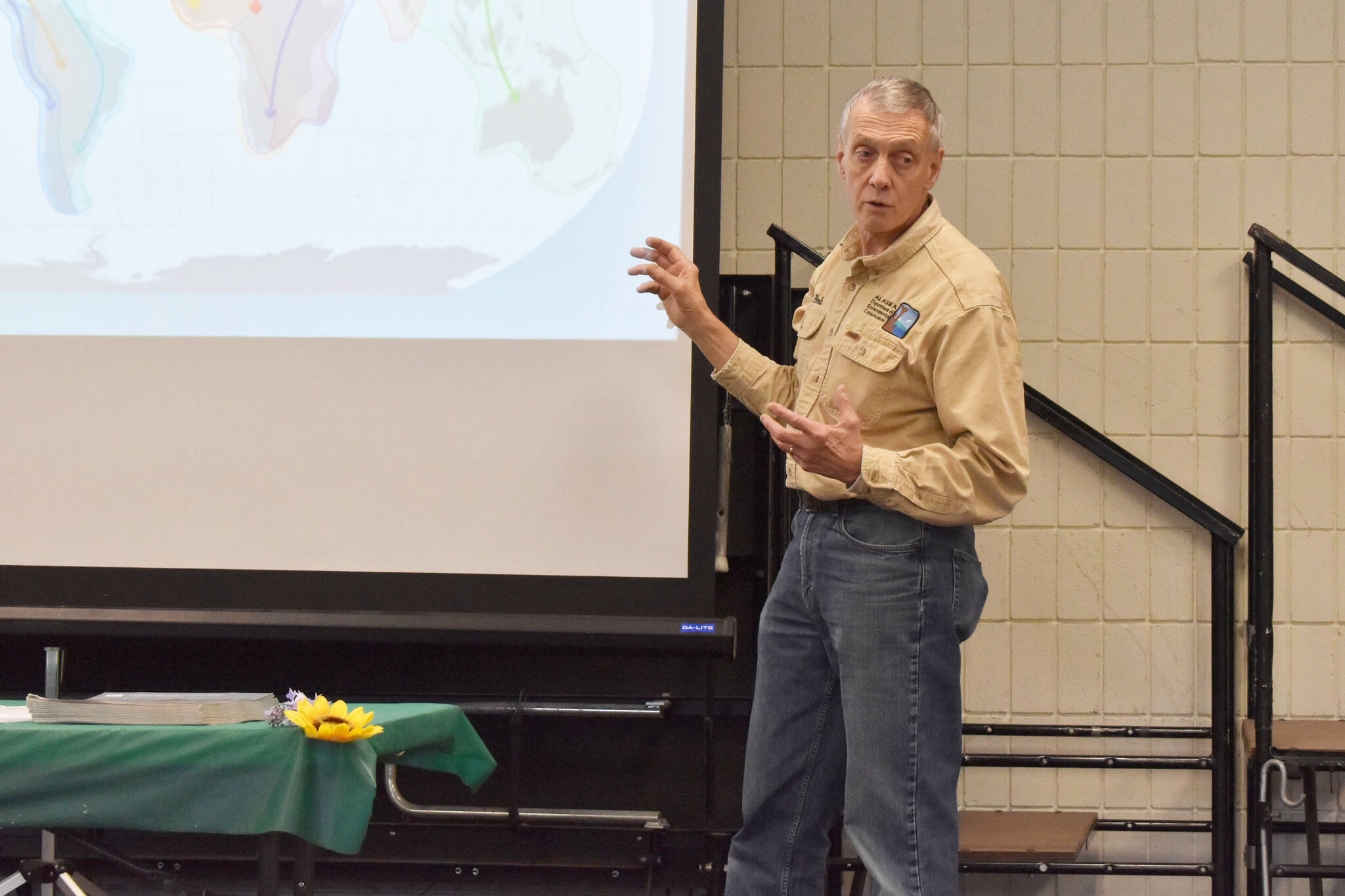Highly Pathogenic Avian Influenza is spreading in Alaska, with cases confirmed in both wild birds and in domestic animals.
Since the virus was first detected April 29 in a flock of chickens and ducks in the Matanuska-Susitna Valley, 73 confirmed cases have been reported in the state, according to data from the State Department of Environmental Conservation’s Division of Environmental Health. Of these, only two have been reported on the Kenai Peninsula, both detected May 27 in bald eagles.
In response to the outbreak, the Alaska State Fair announced Thursday that all poultry exhibits at this year’s fair have been canceled.
At this weekend’s 4-H Agriculture Expo in Soldotna, birds were shown and exhibited on Friday morning, but poultry shown at the expo were all checked by veterinarians and had samples taken to be tested for the virus.
State Veterinarian Dr. Robert Gerlach also hosted during the event a workshop on the dangers of the virus.
Avian influenzas are categorized either as low or highly pathogenic. According to Gerlach, there are lots of low pathogenic avian viruses in North America. Viruses are defined as highly pathogenic if they kill poultry. “If they kill poultry then it’s a threat to food security, that means commerce is shut down.” According to Gerlach, this threat is serious enough that if a highly pathogenic virus is detected on a farm, every bird on that farm should be euthanized to stop the spread.
The symptoms of highly pathogenetic bird flu can come on quickly and severely, with animals first becoming depressed or sluggish, then suffering neuropathy and spasms, then death. Gerlach said tracking warning signs is paramount, if one animal is acting unusual, all of the rest may be in danger. He recommended that those growing poultry watch for strange behavior, reduced egg laying or unexpected deaths.
Currently, Gerlach says there is little concern of the virus becoming a danger to human health. In the three years since this strain was first identified, Gerlach says only a handful of people have gotten infected, and they didn’t experience serious symptoms. Gerlach says there is some concern about the ability of the virus to mutate and recombine, pointing to China, where the density of farm animals like poultry and pigs is so great that new forms of swine or bird flu emerge every year.
Gerlach said the avian virus can spread in many ways, either directly from bird to bird or indirectly through contact with contaminated material. One of the biggest concerns, especially for people who raise poultry, is contaminated wild birds getting too close to domesticated animals by using their feed, entering their coop or just depositing waste from overhead. The virus can persist for extended periods of time in cool and wet environments, making Alaska uniquely vulnerable to its spread.
The best way to protect personally owned poultry from infection is through biosecurity measures like washing boots and hands before entering coops, storing feed in secured containers unavailable to wild animals and securing animals away from wild birds, according to Gerlach.
The last time a strain of avian flu similar to this one emerged was in 2015. That strain was eliminated by the heat of June. The persistence of this virus into August, approaching the winter months, is concerning, Gerlach said. “In the Lower 48, they’re having a heat wave and a drought like nobody’s business. We’re still seeing outbreaks. This is a big concern for everybody, and we think this may stretch out for quite a while.”
To prevent further spread of the avian virus, the state Division of Environmental Health is focusing on outreach and education. Gerlach said that appearances at events like the 4-H expo and surveillance in partnership with other government agencies is the best way to track the spread of the outbreak. The Division of Environmental Health collects samples and tests domestic cases when reported, but doesn’t go door to door because not all residents of the state want to disclose that they have chickens.
For more information about avian influenza, or to report illness in birds, go to dec.alaska.gov/eh/vet.

